
About Andrew Cusack
 Writer, web designer, etc.; born in New York; educated in Argentina, Scotland, and South Africa; now based in London.
Writer, web designer, etc.; born in New York; educated in Argentina, Scotland, and South Africa; now based in London. read more
News
Blogs
Reviews & Periodicals
Arts & Design
World
France
Mitteleuropa
Knickerbockers
Argentina
The Levant
Africa
Cape of Good Hope
Netherlands
Scandinavia
Québec
India
Muscovy
Germany
Academica
Our Cardinal Strikes Again
Cardinal O’Brien, Scottish Primate, Preaches at Newly Ordained Priest’s First Mass in the Extraordinary Form at St. Mary’s Cathedral Edinburgh
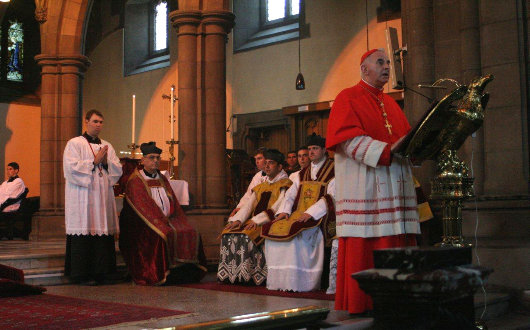
Keith Patrick O’Brien, the Primate of Scotland and Cardinal Archbishop of St Andrews & Edinburgh, this weekend preached at the first mass offered by the recently ordained Fr. Simon Harkins of the Priestly Fraternity of St. Peter. The mass was offered in the Cardinal’s own Cathedral of St. Mary in Edinburgh, Fr. Harkins’s own home town. The Very Rev. Fr Josef Bisig FSSP and the Very Rev. Fr. Franz-Karl Banauch FSSP assisted, and monks from the Transalpine Redemptorists of Papa Stronsay (who provided these photos) were also present, in addition to a number of diocesan priests.
I’ve spent the past eight years of my life divided between three (arch-) dioceses and I have to admit that Cardinal O’Brien is still the one I feel the greatest affection for. He’s an affable, uncomplicated fellow, and can be relied upon to defend what’s right in the media — unquestionably one of the best prelates in Britain today.
“I find him a much more approachable figure than other Scots prelates,” writes Damian Thompson, “less inclined to stand on his dignity despite (or perhaps because of) his red hat. I met him once at a party to relaunch the Scottish Catholic Observer, to whom he’s been a good friend; he didn’t sweep in surrounded by flunkeys, but hung around chatting in ordinary priest’s dress, reminding me a bit of Basil Hume in that respect.”
As it happens, I’m head of Cardinal O’Brien’s fan club on Facebook, which I encourage any Facebook users out there to join.
God bless our cardinal, and many congratulations to Fr. Hawkins!
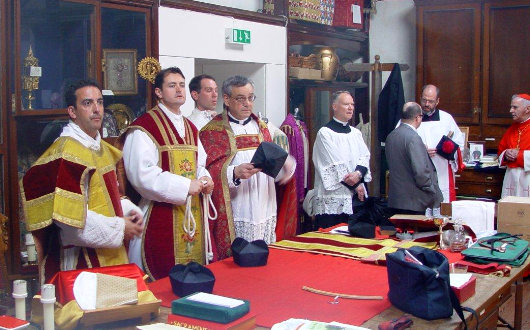
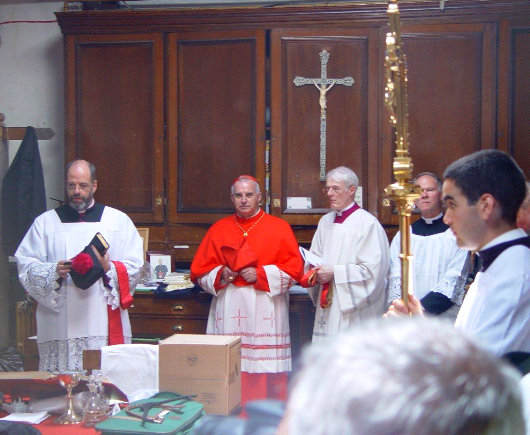
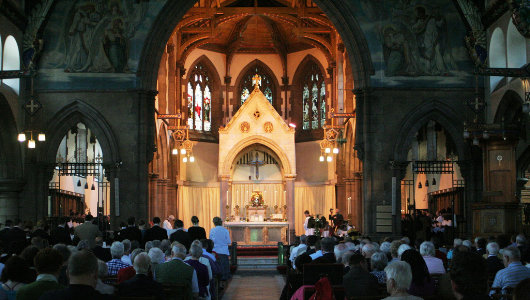
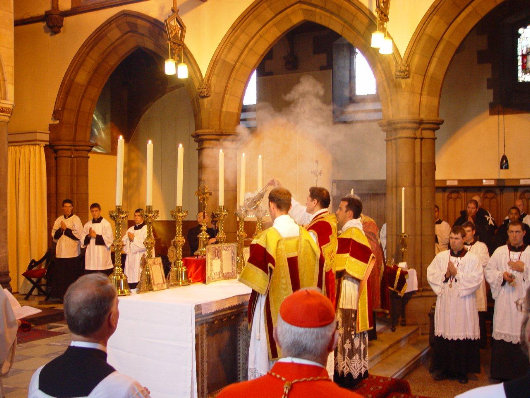
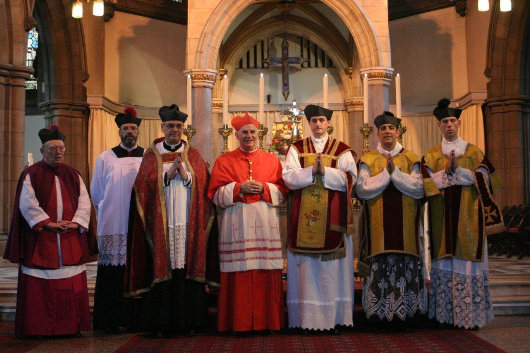
Search
Instagram: @andcusack
Click here for my Instagram photos.Most Recent Posts
- Gellner’s Prague December 19, 2024
- Monsieur Bayrou December 18, 2024
- Dempsey Heiner, Art Critic December 17, 2024
- Vote AR December 16, 2024
- Articles of Note: 12 December 2024 December 12, 2024
Most Recent Comments
Book Wishlist
Monthly Archives
Categories



Glorious!
Great words about Card. O’Brien…may he be blessed in every way.
Have Scots-Irish/English and Welsh blood in me from my mother’s side; always great to hear of the revival of authentic Catholic life in Scotland-England-Ireland-Wales.
Prayers from the USA!
Andrew,
While agreeing with your praise of the Cardinal Archbishop within whose diocese I live and work, might I just whisper in your ear that he is not the Primate of Scotland, as there is no primatial see in this country,St A&E and Glasgow being Archiepiscopal sees equal in dignity.
Are you quite sure about that Fr PF? I’ve always heard St A’s & E referred to as the primacy of Scotland, though I assume the status is traditional rather than formal/official.
Just to back up Fr FP: there is no Primacy in Scotland (more’s the pity perhaps) and the Cardinal’s hat has tended to go either way along the M8 in recent years.
Congratulations to Fr Harkins; my one big reservation about the reintroduction of a more ‘traditional’ liturgy has been the reintroduction of (a)the biretta – that most ludicrous piece of headgear – and (b)lace – why bother having a matching set of mass vestments for the ministers at a solemn mass, when they all have non-matching lace-fringed albs? It just looks tacky and stupid and detracts from the solemnity and dignity of the occasion.
St. Andrew’s and Edinburgh has always been the prmatial see in Scotland. The diocese traces it’s history back to c.908 while Glasgow was founded in 1492. The two archdiocese are not, and never have been, of an equal status. When the present Cardinal was installed as archbishop the Catholic papers had the heading “Scotland welcomes it’s new leader” this was because Even when the cardinal was based in Glasgow, the Archbishop in Edinburgh was still regarded as head of the Church in Scotland because his see was the primatial see.
The pre-reformation see of St Andrews was the Primatial See in Scotland. After the restoration in 1878, there was 2 Archdioceses created, Edinburgh with the title St Andrews being added at the request of(Arch)Bishop Strain was created Metropolitan with a province and Glasgow, without a province.
The Episcopalians claim to have a primate but no Catholic Bishop has held that title since the execution of Archbishop John Hamilton on 6th April 1571!
Campbell, am I quite sure? Not of anything unless it’s in the Creed or the Catechism, but here are my thoughts on this:
When the Hierarchy was restored by Pope Leo XIII, St A&E was set up as a metropolitan see with almost all the Scottish dioceses as suffragans. The exception was Glasgow which was to be governed by an Archbishop with no suffragans but directly subject to the Holy See (Leo XIII, Ex Supremo Apostolatus, 1878). This was possibly done out of respect for Archbishop Eyre, the first Archbishop of Glasgow in the restored Hierarchy, who remained Apostolic Delegate for Scotland until his death. Leo XIII says it was because Glasgow is an ancient, great and noble city which had been made an archiepiscopal see by Pope Innocent VIII (in 1492). In 1947, with the creation of the dioceses of Motherwell and Paisley, Glasgow became a metropolitan see. Cardinal O’Brien is the President of the Scottish Catholic Bishops Conference; his predecessor was the late Cardinal Winning, who was Archbishop of Glasgow.
As for traditional usage, I personally have never heard or seen the expression ‘Primate of Scotland’ used of a an Archbishop of St A&E until now (but then, being from Glasgow, how would I?), although the present Episcopal Bishop of St Andrew’s is the ‘Primus of Scotland’ in the Anglican Communion.
Fascinating stuff! My thanks to the various commenters for their contributions.
I think we can probably attribute a customary or traditional primacy to St Andrews & Edinburgh, but it seems clear from the evidence presented that this has no official force.
Given the relative importance of Glasgow to the Scottish Church, that lack of official force seems quite reasonable to me.
Come on Brad! If you are going to try and pass of false information about the Archdiocese of St Andrews and Edinburgh – at least get the name right!
As Fr Paul Francis states, KP O’Brien is “head” of the Scottish Church due to the position he holds as President of the Bishop’s Conference, just as TJ Winning was before that and GJ Gray before that.
I am not trying to pass off any false information and so I spelt the name wrong, i made a mistake. We can’t all be perfect like you!
Thank you, Fr JO.
Brad, with regard to the notion that the Glasgow diocese is not old enough to be taken seriously, Glasgow simply became a metropolitan see in 1492; the diocese can name its bishops back to the eleventh century and owes its origins to Saint Mungo or Kentigern, first Bishop of Glasgow and founder of the city in the sixth century.
I came across an interesting (for me as a Passionist) quotation from a letter of Lord Bute to the Cardinal Prefect of Propaganda in June 1877:
‘Glasgow is one of the most ancient bishoprics of Scotland, founded by St. Kentigern, whose Relics still remain in the beautiful cathedral and whose office has for some years been authorized by the Holy See for the Passionists of this city’ (quoted in Vincent McClelland’s article ‘A Hierarchy for Scotland, 1868-1878’, The Catholic Historical Review (Catholic University of America Press), Vol. 56, No. 3 (Oct., 1970), p.493).
Brad, what is this then: “St. Andrew’s and Edinburgh has always been the prmatial see in Scotland”? What evidence do you give that this is true? For as a priest of said Archdiocese, I know of no one who has ever claimed this title or even thought to claim that title other than on here!
FrPF, Brad did not imply that Glasgow wasn’t old enough to be taken seriously. They are your words not his.
FrJO, The Catholic Encyclopedia says that St. Andrews and Edinburgh is a primatial see. The late Archbishop MacDonald (of happy memory) used to get very annoyed (along with all Scots Catholics) when the press referred to the Archbishop of Westminter as the “leader of Britain’s Catholics” (something they still do sometimes)and would write to them pointing out that there was no leader of Britain’s Catholics and that Westinster’s Archbishop was the leader of English Catholics. When he was asked who was the leader of Scotland’s Catholics he always replied firmly, and proudly, “I AM!”
The Archbishop of St. Andrews (and, after 1878, St. Andrews and Edinburgh) has been primate of Scotland since 1472, but this primacy was established against the protests of the bishops of Glasgow and from 1492, the archbishop of Glasgow was exempt from the jurisdiction of St. Andrews, answerable directly to the papacy as “specialis filia Romanae sedis.” This title had been used in the 13th cent. to protect Scottish sees against the primatial claims of the archbishops of York.
I *think* (though I’m not sure) that the Glaswegian exemption was revived at some point after the revival of the Catholic hierarchy in Scotland and is still in force.
The origins of the division really have their origins in the fact that early Christian “Scotland” (like “England”) was actually a Balkans of petty kingdoms, with “Scots” (i.e. Irish) dominant in the west and Picts and Anglians dominant in the East. I’m not sure which see is older, but my guess is that it’s Glasgow. I know St. Mungo/Kentigern is said to have come from Fife, but, on the whole Scotland was evangelised from the west. Glasgow fell within the semi-Romanised kingdom of Strathclyde, and the remains of the Antonine wall and various other Roman remains are only a few hours walk from the centre of the city.
Deo Gratias! Another priest to carry on the Traditions of the Faith!
This is all very fascinating, especially the question of the Scottish Primacy. It reminds me of the battle between the Archbishops of Canterbury and York over the Primacy of England.